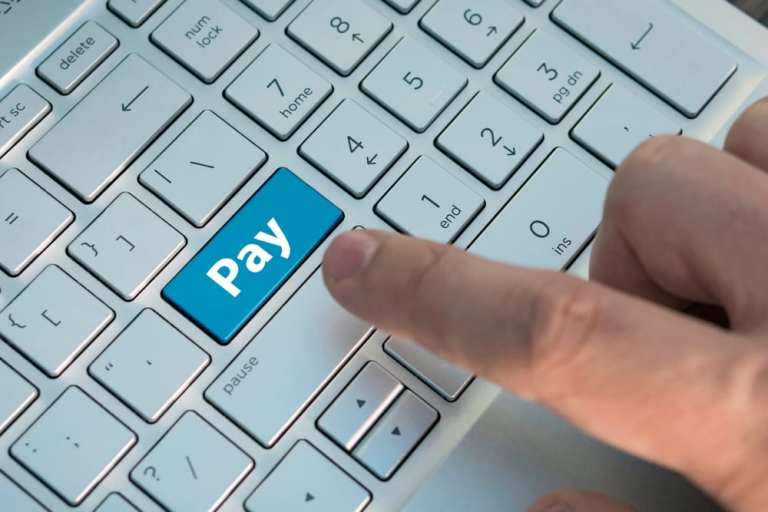The Cashless Check Is In The Mail

It might be too much (and certainly too cliché) to call it a revolution. Even so, it’s in the same neighborhood — consumer demand for faster, digitally pushed payments is leading to increasing pressure on corporations and other organizations to offer better forms of disbursement. Indeed, those pressures are leading to (significant) progress, even though much more needs to be done.
That was one of the themes generated by a recent PYMNTS discussion between Karen Webster and Deirdre Ives, managing director of Wirecard North America, which centered on the growing use — and increasingly understood potential — of digital disbursements. The spread of mobile and online commerce, combined with the construction of real-time payment infrastructures around the globe, are factors being felt in the world of disbursements, whether that be insurance and utility refunds, tip payouts or other transactions.
“Our mission is for cashless to really take hold in the United States,” Ives told Webster, when asked to describe what drives her own devotion to the digital disbursements space. “When we think about the world, we really think of digital disbursements as part of the entire payments ecosystem. When you look at the trends out there, customers want speed, choice and ease — not only about who they pay, but how they are paid, too.”
Disbursements Shift
When it comes to accounts payable, and even the wider world of B2B payments, readers of PYMNTS probably don’t need to be told how relatively primitive most methods seem to be. Company payments to creditors — including consumer payouts, refunds and earnings — can be paper-based, time-consuming, costly and otherwise cumbersome. Checks still hold sway — indeed, checks still function as the dominant form for so many B2B payments, including disbursements, that one can be forgiven for wondering when all that paper will ever go the way of pay phones and horse-drawn wagons.
Checks are a legacy technology, and enjoy the power of inertia that comes from that. Even so, Ives noted, corporate executives and other insiders are increasingly coming around to the idea that not only is paper expensive, but their brands might benefit more from having robust digital disbursement programs in place.
Examples of that include a story Ives told about a utility company, American Electric Power — a firm operating in an industry that was once rather staid and monopolistic, but has, over the last decade or so, begun to face more competitive pressures. For its disbursements to consumers, the utility firm had long relied on checks.
Digital Benefits
However, in search of what Ives called “operational efficiencies,” along with a desire to build a better customer experience (and gain the customer loyalty and PR advantages that can come from that), American Electric Power worked with Wirecard to create a disbursements program centered around co-branding payment cards. That offered “faster processing for the payment deliverer,” Ives said, and resulted in no “push back on the form factor from customers,” who were now receiving their disbursements more quickly.
Another Wirecard customer — which Ives did not name — took a similar path to better, digitally anchored disbursements, and realized significant gains, she noted. Those gains included a 12 percent reduction in customer service calls in the first year, along with saving 1,000 pounds of paper, thanks to the move to a digital process.
Though much of the drive toward more digital disbursements is being fueled by consumer demand and changing customer expectations (one can hardly dip a toe in the digital economy without coming away with a new sense of how buying and paying should be done), forward-thinking businesses are also playing a role in this ongoing (if often slow) shift for both B2B and B2C transactions.
As Ives explained, companies that often step back and deeply consider how “payments [touch] their business[es],” or those that have become “very sophisticated in their collection of payments,” tend to become “first movers” for digital disbursements. Granted, businesses don’t always have the greatest incentives to change their disbursement processes — not only does the low-tech check have a long-standing place in many operations, but, for accounts payables and disbursements, not all organizations are in a massive hurry to get rid of the money.
Brand Rewards
Businesses, especially those first movers, sometimes do realize not only the reduced costs of offering digital disbursements, but the branding benefits that come along with them. After all, what better way to make customers happy — and make them stay with that company — than to pay them quickly, with minimum hassle, and in a payment form that appeals to their personal needs and desires? That’s what customer engagement is all about.
That said, “new payment flows, like other processes, have growing pains,” Ives said, though such industries as cable, satellite and telecommunications are figuring out the benefits of those disbursements, and are leading the way. Expect more such progress from, say, the restaurant industry, which has — in just more than a generation or so — transformed from a cash-centric operation to one where payment cards now dominate. Digital disbursements open up new avenues for quickly paying out tips — a good way to keep hold of the best workers, and to pay for repairs and other such expenses. Gig work, too, is fertile ground for more digital disbursement progress.
It might not a be revolution (not yet, at least), but what’s happening in the world of digital disbursements is significant and historic. Much work remains, but the path and benefits are becoming much more clear.